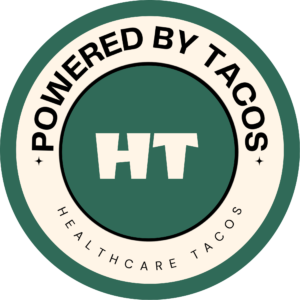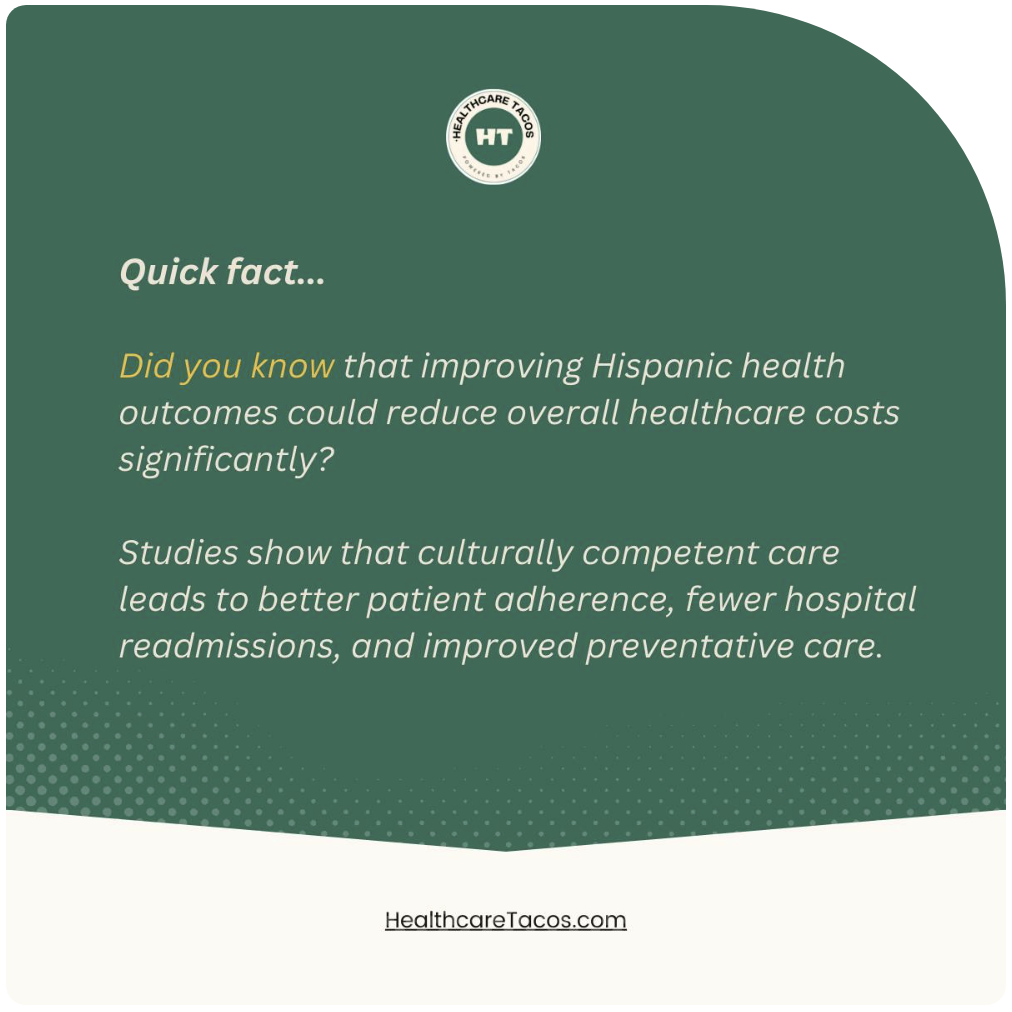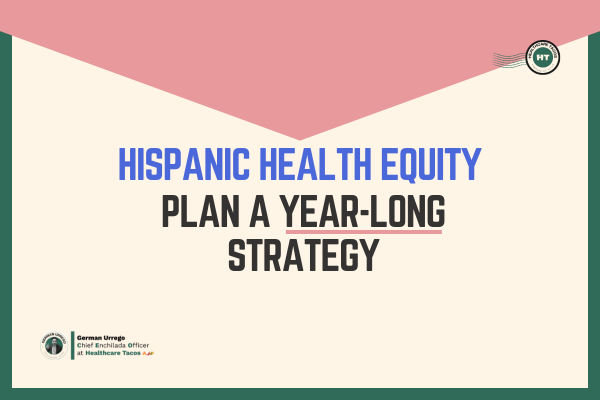

Amig@s – Let’s taco ‘bout Hispanic Health Equity.
If you’re serious about creating a more inclusive healthcare environment for Hispanics.
It’s time to start planning a full year of health equity strategy. Forget the quick fixes or one-month initiatives.
Because here’s the truth.
Achieving true health equity for Hispanics isn’t a one-day fiesta.
It’s like making a good piece of carne asada; you need dedication, the right ingredients, and a steady hand.
While building a strategy that truly serves Hispanics takes effort and time, it doesn’t have to feel overwhelming.
I’ve outlined a simple structure to follow and make meaningful progress.
Let’s taco ‘bout it
Amig@s – Let’s taco ‘bout Hispanic Health Equity.
If you’re serious about creating a more inclusive healthcare environment for Hispanics.
It’s time to start planning a full year of health equity strategy. Forget the quick fixes or one-month initiatives.
Because here’s the truth.
Achieving true health equity for Hispanics isn’t a one-day fiesta.
It’s like making a good piece of carne asada; you need dedication, the right ingredients, and a steady hand.
While building a strategy that truly serves Hispanics takes effort and time, it doesn’t have to feel overwhelming.
I’ve outlined a simple structure to follow and make meaningful progress.
Let’s taco ‘bout it.
![]()
Three Insights 🌶️
I. Health Equity is a Long Game
Improving Hispanic health is NOT a quick fix.
I’m sure you know this.
It requires us to roll up our sleeves and commit to real, lasting change.
When we look at our healthcare system today, we see challenges that have built up over generations.
Families struggling to explain.
- Symptoms to doctors who don’t speak their language.
- Cultural traditions that aren’t understood or respected.
- Parents avoiding preventive care due to immigration status.
Each of these barriers.
Tells a story of how our healthcare system has historically fallen short for Hispanic communities.
Now, you and I know.
These are NOT just minor inconveniences.
They’re significant roadblocks that mean the difference between timely care and conditions getting worse.
Think about this for a minute.
- A mother judged for her cultural remedies.
- A grandmother who can’t understand medication instructions.
- A father missing diabetes care due to fear of immigration status.
These are the real human experiences we need to address in the Hispanic community.
And creating meaningful change.
This means doing the hard work of rebuilding trust, reshaping our healthcare practices, and creating a new environment.
Where Hispanic families feel truly seen, heard, and cared for.
But, what this means is the following.
Training healthcare providers in cultural competency. Another one is ensuring Spanish language services are available.
Also, here is a very important one.
Working directly with Hispanic communities to understand their unique needs and concerns.
Now, I always say this and will continue to say it.
This is about more than just translating documents or hiring a few bilingual people.
It’s about fundamentally transforming how we deliver healthcare for everyone in our community.
In this case, making healthcare Hispanic-friendly.
II. Community Collaboration is Key
Here is this and please do not forget it.
Success depends on authentic partnerships with the following groups.
- Faith-based groups.
- Local organizations.
- Cultural organizations.
- Hispanic community leaders.
- Promotoras (community health workers).
Why are these so important?
Well, these partnerships will help you.
Navigate cultural nuances, overcome language barriers, and build trust within Hispanic communities.
Something very, very important to note and follow.
Here is why.
Getting healthcare right for Hispanics means understanding what matters most to them.
Like how the whole family often makes health decisions together and how respect shapes every interaction.
Now, when you as health organization.
Honor these cultural values; our programs actually work because they feel familiar and trustworthy to the people we serve.
So, true change happens when we come together as a community.
Once again.
This is about the following.
Sitting down with local Hispanic leaders who know their neighborhoods inside and out.
Working hand-in-hand with trusted promotoras who are already making house calls and checking in on families.
Also, partnering with churches and cultural centers that serve my communtiy with gathering places for support.
Here is why this works.
When we, as healthcare operators.
Take the time to understand how family ties matter in Hispanic cultures.
Or simply how respect shapes interactions between patients and providers.
We create programs that really connect with my community.
Let me put it this way.
Think about the grandmother I mentioned earlier.
Who’s more likely to take health advice from her trusted church leader or the family that makes medical decisions together rather than individually?
These cultural values are NOT barriers to overcome; they’re actually strengths to build upon.
Think about it, this is something you can take advantage of.
Right?
So, to finish this point.
The most successful programs come from listening to the community itself.
Whether it’s working with local mercados to promote healthy eating.
Partnering with soccer leagues to encourage physical activity.
Collaborating with cultural festivals to provide health screenings.
These authentic connections make all the difference.
And when people see their culture and values reflected in their healthcare. They’re more likely to trust the system and actively engage in their well-being.
Crazy, right? So let’s do it.
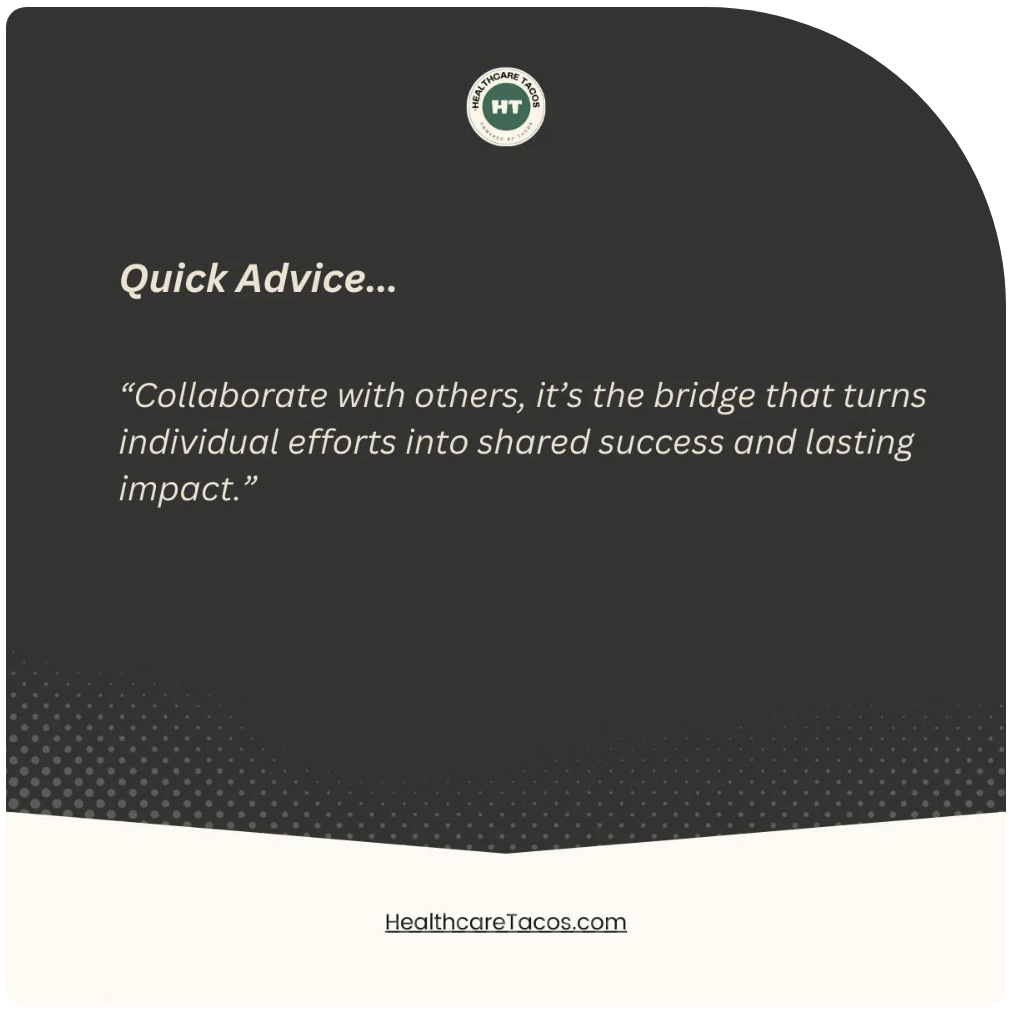
III. Data is Your North Star
To make real progress in Hispanic health, we need to dig deeper than just checking boxes.
Every Hispanic community has its own story, from families who have been here for generations to those who have just arrived.
Some prefer Spanish, others English, and many use both.
Whether we’re from Mexico, Guatemala, Cuba, or Colombia like me, each of us brings unique cultural health beliefs and practices.
Now.
Good data helps us understand these differences and how they affect health.
Your healthcare organization needs to know this.
- How different generations access healthcare.
- If they’re worried about their immigration status.
- If they’re struggling with housing or transportation.
- Which health issues affect specific Hispanic communities.
- If someone feels more comfortable in español or in English.
These things are highly important.
Here is a great article that also talks about the importance of recognizing diversity among Hispanics could improve health outcomes.
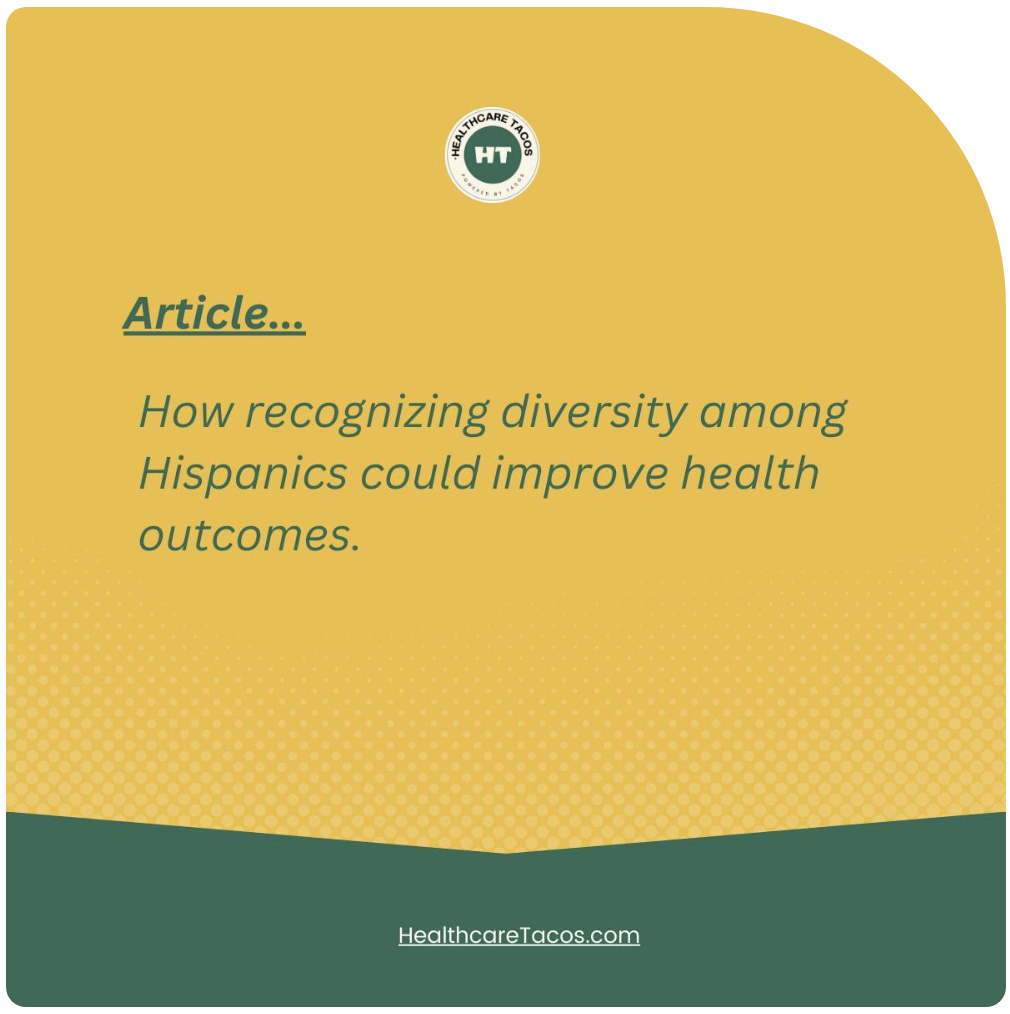
So, when we pay attention to these details, we can create programs that truly meet people where they are.
No más one-size-fits-all approach; think about this like having a good map.
The more detailed it is.
Guess what?
The better we can guide my Hispanic community toward better health, the better.
Insights
I. Health Equity is a Long Game
Improving Hispanic health is NOT a quick fix.
I’m sure you know this.
It requires us to roll up our sleeves and commit to real, lasting change.
When we look at our healthcare system today, we see challenges that have built up over generations.
Families struggling to explain.
- Symptoms to doctors who don’t speak their language.
- Cultural traditions that aren’t understood or respected.
- Parents avoiding preventive care due to immigration status.
Each of these barriers.
Tells a story of how our healthcare system has historically fallen short for Hispanic communities.
Now, you and I know.
These are NOT just minor inconveniences.
They’re significant roadblocks that mean the difference between timely care and conditions getting worse.
Think about this for a minute.
- A mother judged for her cultural remedies.
- A grandmother who can’t understand medication instructions.
- A father missing diabetes care due to fear of immigration status.
These are the real human experiences we need to address in the Hispanic community.
And creating meaningful change.
This means doing the hard work of rebuilding trust, reshaping our healthcare practices, and creating a new environment.
Where Hispanic families feel truly seen, heard, and cared for.
But, what this means is the following.
Training healthcare providers in cultural competency. Another one is ensuring Spanish language services are available.
Also, here is a very important one.
Working directly with Hispanic communities to understand their unique needs and concerns.
Now, I always say this and will continue to say it.
This is about more than just translating documents or hiring a few bilingual people.
It’s about fundamentally transforming how we deliver healthcare for everyone in our community.
In this case, making healthcare Hispanic-friendly.
II. Community Collaboration is Key
Here is this and please do not forget it.
Success depends on authentic partnerships with the following groups.
- Faith-based groups.
- Local organizations.
- Cultural organizations.
- Hispanic community leaders.
- Promotoras (community health workers).
Why are these so important?
Well, these partnerships will help you.
Navigate cultural nuances, overcome language barriers, and build trust within Hispanic communities.
Something very, very important to note and follow.
Here is why.
Getting healthcare right for Hispanics means understanding what matters most to them.
Like how the whole family often makes health decisions together and how respect shapes every interaction.
Now, when you as health organization.
Honor these cultural values; our programs actually work because they feel familiar and trustworthy to the people we serve.
So, true change happens when we come together as a community.
Once again.
This is about the following.
Sitting down with local Hispanic leaders who know their neighborhoods inside and out.
Working hand-in-hand with trusted promotoras who are already making house calls and checking in on families.
Also, partnering with churches and cultural centers that serve my communtiy with gathering places for support.
Here is why this works.
When we, as healthcare operators.
Take the time to understand how family ties matter in Hispanic cultures.
Or simply how respect shapes interactions between patients and providers.
We create programs that really connect with my community.
Let me put it this way.
Think about the grandmother I mentioned earlier.
Who’s more likely to take health advice from her trusted church leader or the family that makes medical decisions together rather than individually?
These cultural values are NOT barriers to overcome; they’re actually strengths to build upon.
Think about it, this is something you can take advantage of.
Right?
So, to finish this point.
The most successful programs come from listening to the community itself.
Whether it’s working with local mercados to promote healthy eating.
Partnering with soccer leagues to encourage physical activity.
Collaborating with cultural festivals to provide health screenings.
These authentic connections make all the difference.
And when people see their culture and values reflected in their healthcare. They’re more likely to trust the system and actively engage in their well-being.
Crazy, right? So let’s do it.

III. Data is Your North Star
To make real progress in Hispanic health, we need to dig deeper than just checking boxes.
Every Hispanic community has its own story, from families who have been here for generations to those who have just arrived.
Some prefer Spanish, others English, and many use both.
Whether we’re from Mexico, Guatemala, Cuba, or Colombia like me, each of us brings unique cultural health beliefs and practices.
Now.
Good data helps us understand these differences and how they affect health.
Your healthcare organization needs to know this.
- How different generations access healthcare.
- If they’re worried about their immigration status.
- If they’re struggling with housing or transportation.
- Which health issues affect specific Hispanic communities.
- If someone feels more comfortable in español or in English.
These things are highly important.
Here is a great article that also talks about the importance of recognizing diversity among Hispanics could improve health outcomes.
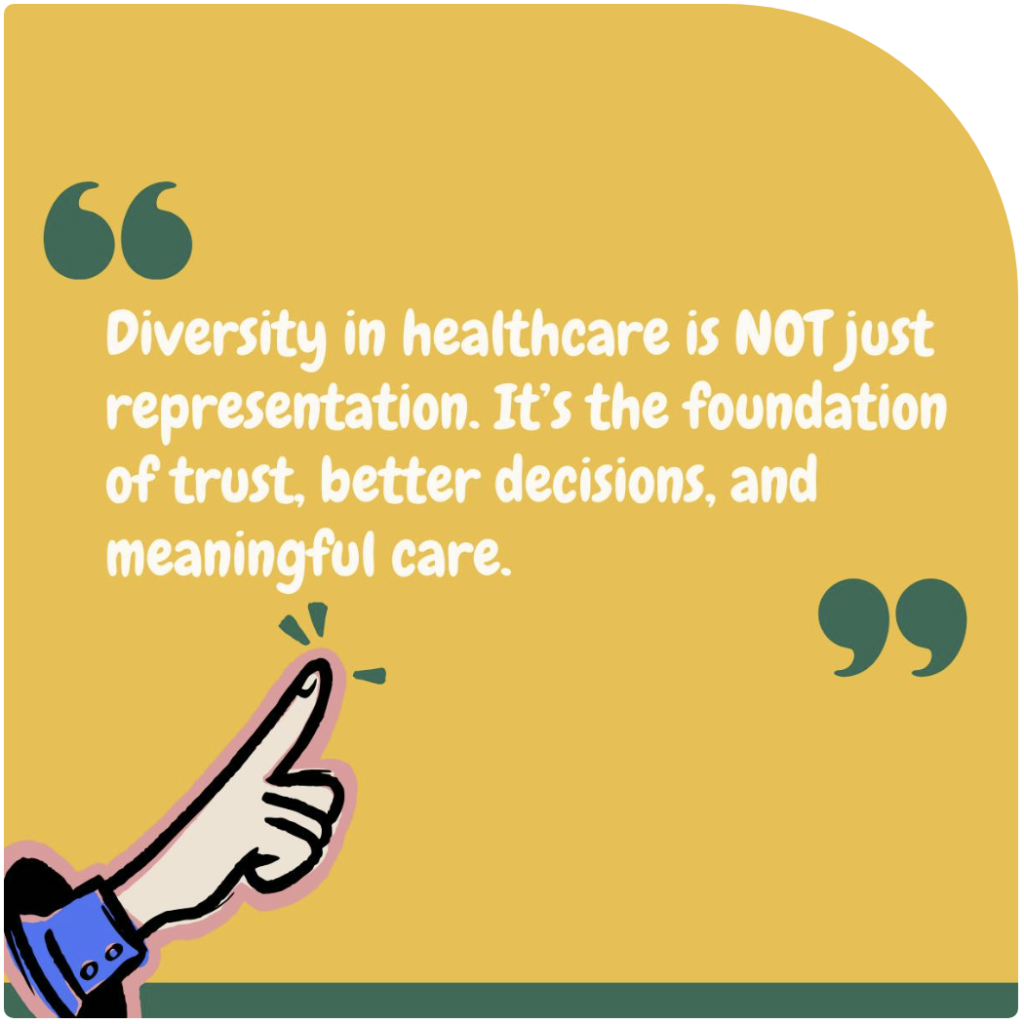
So, when we pay attention to these details, we can create programs that truly meet people where they are.
No más one-size-fits-all approach; think about this like having a good map.
The more detailed it is.
Guess what?
The better we can guide my Hispanic community toward better health, the better.
![]()
Two Actionable Steps 🌮
I. Set Quarterly Milestones
Set clear, culturally-informed quarterly goals to advance Hispanic health equity.
Here is this quick but good example.
- QI – Listen & Learn
Start by understanding our community’s needs and talk to families about their healthcare struggles.
Maybe they can’t find Spanish-speaking doctors, worry about paperwork, or feel their cultural practices aren’t respected.
This is our time to really hear their stories.
- QII – Start Small but Smart
Take what we learned and create focused programs.
Maybe it’s Spanish-language diabetes education at the local church or partnering with the neighborhood mercado for health screenings.
The key is starting with programs that feel familiar and trustworthy to our community.
- QIII – Grow What Works
Look at which programs really connect with our families.
Did that church program bring in more abuelitas for check-ups?
Are more parents asking questions at the mercado health talks?
Build on these successes and adapt based on what our community tells us.
- QIV – Check Progress
Look at the numbers.
Are more Hispanic families getting preventive care? Also, listen to the stories.
Do people feel more comfortable seeking healthcare?
Are they bringing their whole families in? This tells us what’s working and what needs to change for next year.
Remember, each community moves at its own pace, and the key is to keep moving forward together.
II. Create a Health Equity Task Force
Building a strong health equity team is like creating a recipe, you need the right ingredients to make it work.
Here’s how to bring together a task force that represents and understands Hispanics.
- Who Should Be at the Table
Think of your task force as a family gathering where everyone brings something special.
You’ll want bilingual doctors and nurses who understand both medicine and culture.
Bring in trusted community leaders who know the neighborhood’s needs.
Don’t forget our invaluable promotoras.
Those community health workers who are already making house calls and building trust.
Add cultural liaisons who can bridge gaps.
And staff members who understand the daily challenges Hispanic families face in healthcare.
- Make it Diverse
Just like our Latin American heritage spans many countries, your task force should reflect this diversity.
Someone from Mexico might bring different insights than someone from Cuba or Venezuela.
These varied perspectives will help you create solutions that work for everyone.
- Keep it Real
Your task force will tackle the tough stuff, such as language barriers, cultural misunderstandings, and documentation worries.
But they’ll do it while respecting our cultural values and traditions.
Think about them like problem solvers who understand both the healthcare system and our community’s way of life.
- Speak Both Languages
Conduct meetings in Spanish and English so everyone can fully participate and share their ideas.
When people can express themselves in the language they’re most comfortable with, better solutions emerge.
Lastly, remember, this isn’t just a committee.
It’s a familia working together for better health outcomes in our communities.
Actionable Steps
I. Set Quarterly Milestones
Set clear, culturally-informed quarterly goals to advance Hispanic health equity.
Here is this quick but good example.
- QI – Listen & Learn
Start by understanding our community’s needs and talk to families about their healthcare struggles.
Maybe they can’t find Spanish-speaking doctors, worry about paperwork, or feel their cultural practices aren’t respected.
This is our time to really hear their stories.
- QII – Start Small but Smart
Take what we learned and create focused programs.
Maybe it’s Spanish-language diabetes education at the local church or partnering with the neighborhood mercado for health screenings.
The key is starting with programs that feel familiar and trustworthy to our community.
- QIII – Grow What Works
Look at which programs really connect with our families.
Did that church program bring in more abuelitas for check-ups?
Are more parents asking questions at the mercado health talks?
Build on these successes and adapt based on what our community tells us.
- QIV – Check Progress
Look at the numbers.
Are more Hispanic families getting preventive care? Also, listen to the stories.
Do people feel more comfortable seeking healthcare?
Are they bringing their whole families in? This tells us what’s working and what needs to change for next year.
Remember, each community moves at its own pace, and the key is to keep moving forward together.
II. Create a Health Equity Task Force
Building a strong health equity team is like creating a recipe, you need the right ingredients to make it work.
Here’s how to bring together a task force that represents and understands Hispanics.
- Who Should Be at the Table
Think of your task force as a family gathering where everyone brings something special.
You’ll want bilingual doctors and nurses who understand both medicine and culture.
Bring in trusted community leaders who know the neighborhood’s needs.
Don’t forget our invaluable promotoras.
Those community health workers who are already making house calls and building trust.
Add cultural liaisons who can bridge gaps.
And staff members who understand the daily challenges Hispanic families face in healthcare.
- Make it Diverse
Just like our Latin American heritage spans many countries, your task force should reflect this diversity.
Someone from Mexico might bring different insights than someone from Cuba or Venezuela.
These varied perspectives will help you create solutions that work for everyone.
- Keep it Real
Your task force will tackle the tough stuff, such as language barriers, cultural misunderstandings, and documentation worries.
But they’ll do it while respecting our cultural values and traditions.
Think about them like problem solvers who understand both the healthcare system and our community’s way of life.
- Speak Both Languages
Conduct meetings in Spanish and English so everyone can fully participate and share their ideas.
When people can express themselves in the language they’re most comfortable with, better solutions emerge.
Lastly, remember, this isn’t just a committee.
It’s a familia working together for better health outcomes in our communities.
![]()
One Piece of Advice 💃
When working toward Hispanic health equity.
Don’t get paralyzed waiting for the perfect bilingual program or complete cultural competency.
Start with meaningful steps.
Like improving Spanish language signage or building relationships with local Hispanic community leaders.
Learn from each interaction and adjust your approach based on community feedback.
Remember.
Building trust with Hispanic communities happens gradually through reliable, consistent presence and genuine effort.
Even if initial attempts aren’t flawless.
Each authentic interaction, each translated document, and each cultural learning moment brings your organization closer to truly equitable care.
The key is maintaining momentum while staying responsive to community needs and feedback.
Progress might look like.
Starting with a single Spanish-speaking provider before expanding to a comprehensive language access program or beginning with basic cultural competency training before developing more nuanced, culture-specific care protocols.
The journey to Hispanic health equity is ongoing, but consistent, genuine effort creates lasting impact.
Piece of Advice
When working toward Hispanic health equity.
Don’t get paralyzed waiting for the perfect bilingual program or complete cultural competency.
Start with meaningful steps.
Like improving Spanish language signage or building relationships with local Hispanic community leaders.
Learn from each interaction and adjust your approach based on community feedback.
Remember.
Building trust with Hispanic communities happens gradually through reliable, consistent presence and genuine effort.
Even if initial attempts aren’t flawless.
Each authentic interaction, each translated document, and each cultural learning moment brings your organization closer to truly equitable care.
The key is maintaining momentum while staying responsive to community needs and feedback.
Progress might look like.
Starting with a single Spanish-speaking provider before expanding to a comprehensive language access program or beginning with basic cultural competency training before developing more nuanced, culture-specific care protocols.
The journey to Hispanic health equity is ongoing, but consistent, genuine effort creates lasting impact.
